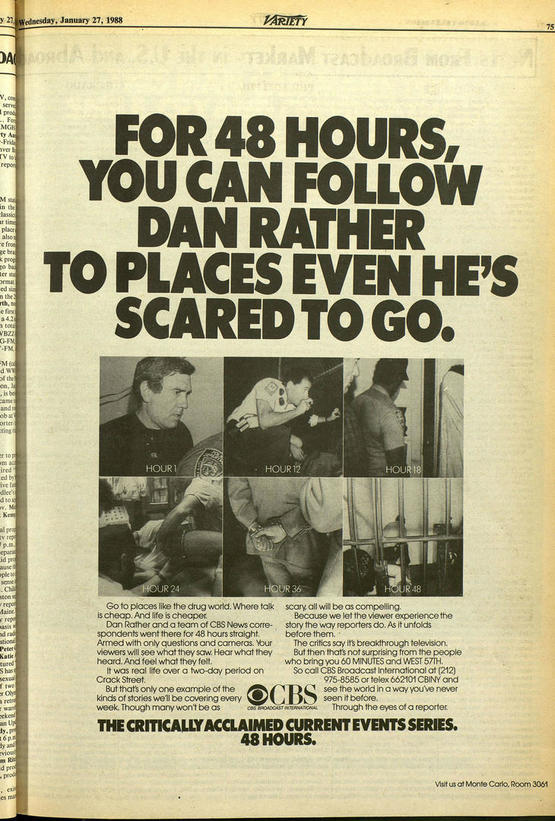In September 1986, "48 Hours on Crack Street" provided a glimpse into America's drug crisis. Executive producer Lane Venardos and head of special unit Joan Richman dispatched eighteen camera crews and twenty-five producers to follow ten correspondent around, including Bernard Goldberg in Greenwich Village, Diane Sawyer in Livingston, N.J, Dan Rather in Brooklyn, and Bob Schieffer in New Jersey, as well as Ed Bradley, David Martin, Bill Moyers, and Richard Roth. They filmed and interviewed pushers, buyers, and victims, ranging from high school girls to Wall Street brokers.
While praising the "visually compelling moments," the New York Times wrote that the show did not present anything new. Critic John Corry wished for less fanfare and more quiet and earnest moments, such as the therapy session with family members of a drug user that Dan Rather attended. Variety described the show as a "grim, depressing document, which was too repetitive and too long." On the other hand, Tom Shales in the Washington Post praised the "all-out blitz effort that netted, frankly, astonishing results—not a preachment but a dramatic dark portrait." He was impressed by the "explosive and riveting footage," and appreciated the fact that the material wasn't shaped and molded as neatly as prime-time documentaries usually are. This, he argues, may be "the way of the TV documentary of the future, something less polished and polite but also more immediate and urgent than we expect documentaries to be."


